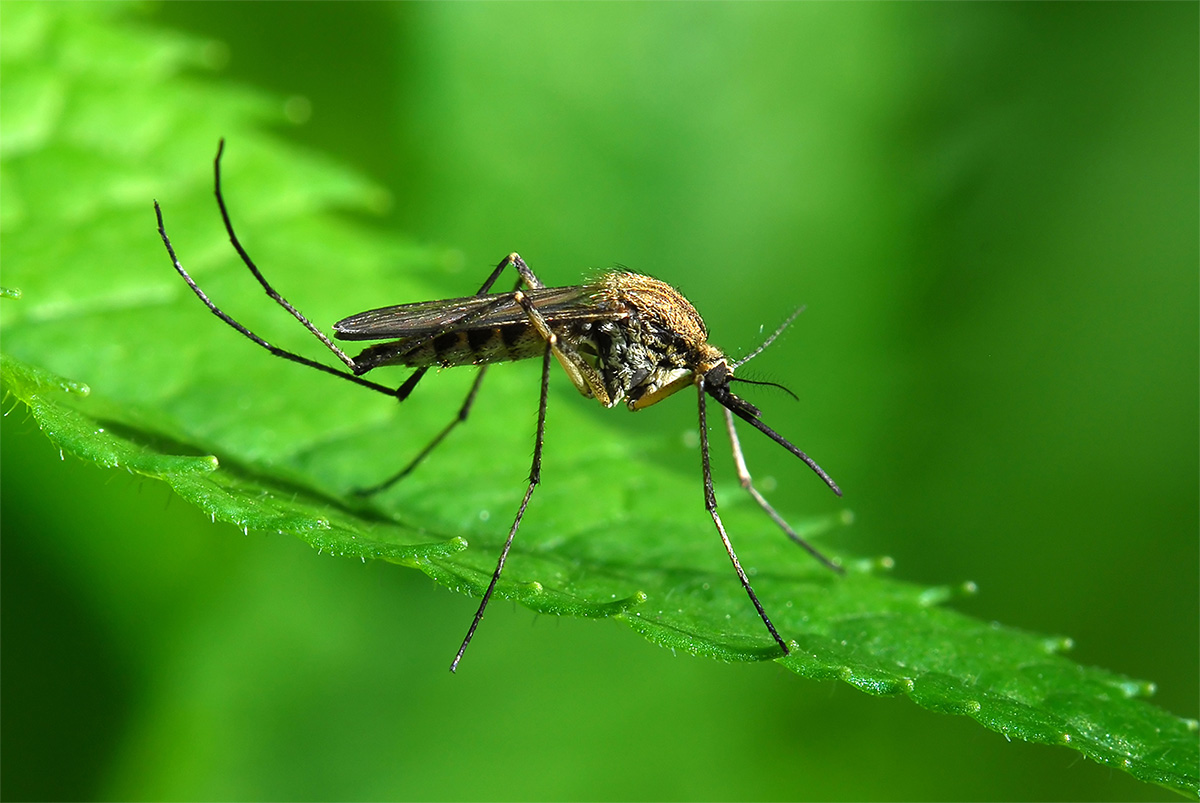Info
Interesting facts:
- Mosquito is Spanish for “little fly.”
- Mosquitoes can’t fly very far or very fast. Most mosquitoes can fly no more than about one to three miles, and often stay within several hundred feet of where they were hatched. However, a few salt marsh species can travel up to 40 miles. The top speed for a mosquito is about 2.5km/h.
- Mosquitoes generally fly below 25 feet. However, some species have also been found at extraordinary heights, including 8,000 feet up in the Himalayas.
- Mosquitoes can smell human breath. They have receptors on their antennae that detect the carbon dioxide released when we exhale. Those plumes of CO2 rise into the air, acting as trails that the mosquitoes follow to find the source.
- Sweat helps mosquitoes choose their victims. Our skin produces more than 340 chemical odors, and some of them smell like dinner to mosquitoes. They are fond of octenol, a chemical released in sweat, as well as cholesterol, folic acid, certain bacteria, skin lotions, and perfume.
- Body heat marks the target. Mosquitoes use heat sensors around their mouthparts to detect the warmth of your body – actually, the blood inside it – then land on you and locate the best capillaries for tapping.
- Mosquitoes feed day and night. Some species, like the Aedes are daytime biters, while others, like Culex, start biting at dusk and continue a few hours into dark.
- The two main mosquito predators are fish and dragonflies. Gambusia, or mosquitofish, feed on mosquito larvae and are used all over the world to help control mosquito populations. Dragonfly larvae, called nymphs, eat mosquito larvae, and adult dragonflies prey on adult mosquitoes. Some towns release dragonflies seasonally as a natural form of mosquito control.

Typically bothersome mosquitos
- Aedes aegypti
- Aedes albopictus (Asian tiger mosquito)
- The major vector for dengue fever in SouthEast Asia
- The name Anopheles is Greek for ‘hurtful’ and the species lives up to it’s name being the major vector for malaria in SouthEast Asia
- Anopheles dirus, flavirostris and maculatus most commonly spread malaria in SouthEast Asia
- Anopheles quadrimaculatus
- Chief carrier of malaria in much of the United States
- Culex pipiens
Aedes
Anopheles
Culex
Others
Alarm Spreads in Brazil Over a Virus and a Surge in Malformed Infants

Elison Wesley, 10, and his 2-month-old brother, José, in Poco Fundo, Brazil. José was born with microcephaly, a rare disorder in which an infant’s head is unusually small. A mosquito-borne virus is suspected of causing a surge in microcephaly in Brazil.Credit Felipe Dana/Associated Press
SÃO PAULO, Brazil — A little-known virus spread by mosquitoes is causing one of the most alarming health crises to hit Brazil in decades, officials here warn: thousands of cases of brain damage, in which babies are born with unusually small heads.
Many pregnant women across Brazil are in a panic. The government, under withering criticism for not acting sooner, is urging them to take every precaution to avoid mosquito bites. One official even suggested that women living in areas where mosquitoes are especially prevalent postpone having children.
Read full info here.